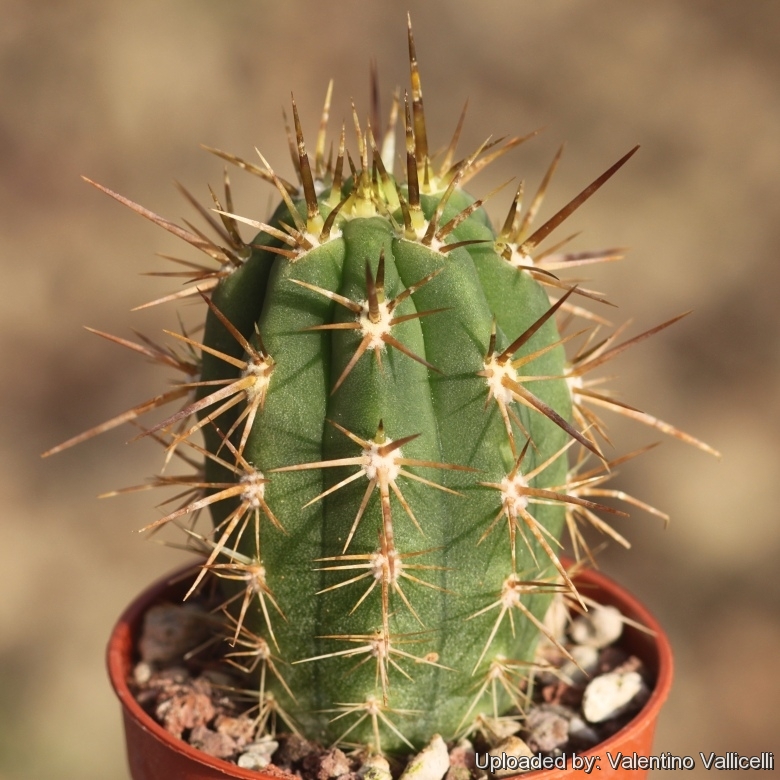
Eulychnia brevispina Photo by: Valentino Vallicelli
Origin and Habitat: Chile, West Region of Antofagasta (Paposo City / behind / left rocky side near sea)
Altitude: Around 30 metres above sea level.
Synonyms:
Description: Eulychnia brevispinaSN|25917]]SN|25917]] is a poorly known branched shrubby or tree-like succulent plant with firm brownish central spines. No information exist on this taxon.
Cultivation and Propagation: Eulychnia brevispinaSN|25917]]SN|25917]] presents no problems in cultivation and will do well in a sunny spot in a cactus house. These plants will tolerate sun and heat, but not extended periods of frost. The crested form is more frost sensitive and should not be kept at less than -0?C. Grow them in rich, porous, sandy soil, and let their soil dry out between waterings. If potted, repot in the spring, if their roots become cramped. Generally, they should be repotted every other year in order to provide fresh soil. However, this doesn't necessarily mean they'll need larger containers. Fill about a quarter of the pot with broken crocks, gravel, etc. to promote good drainage. After repotting, do not water for a week or more. The crested plants enjoy a warm sunny environment and for more speedy growth a light position on a higher shelf with light feeding and rainwater given to the bottom of the plant will ensure success, especially with rooted detached branches, which do well in these conditions.
Propagation: This plant is easily grown on its own roots. It can be increased by cuttings, which will take root in a minimum temperature of 20? C. Cuttings of healthy shoots can be taken in the spring and summer, cut the stem with a sharp, sterile knife, leave the cutting in a warm, dry place for a week or weeks (depending on how thick the cutting is) until a callus forms over the wound. Once the callus forms, the cutting may be inserted in a container filled with firmed cactus potting mix topped with a surface layer of coarse grit. They should be placed in the coarse grit only; this prevents the cut end from becoming too wet and allows the roots to penetrate the rich compost underneath. The cuttings should root in 2 to 6 weeks.
Uses: The fruit is edible, but not very tasty.











